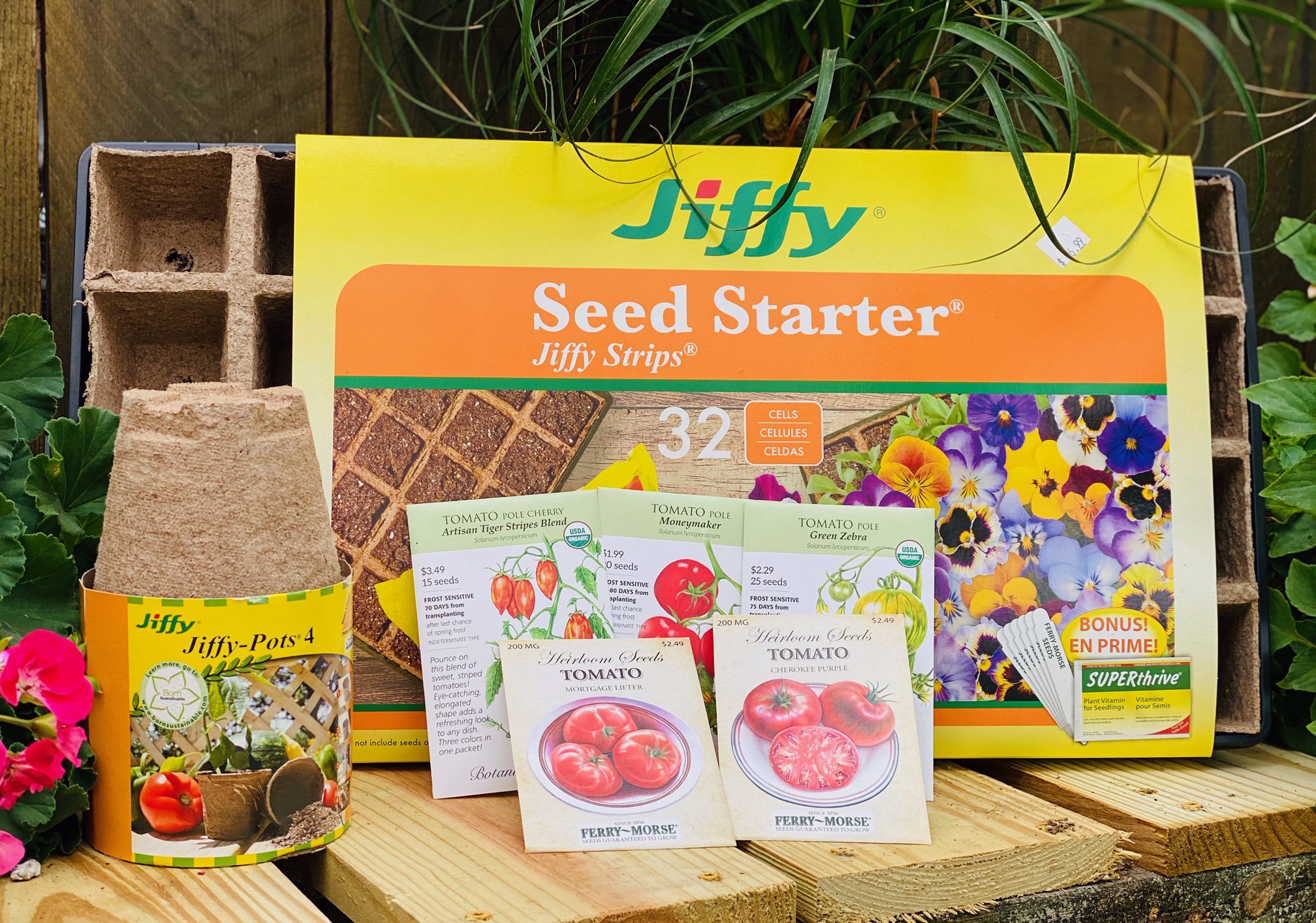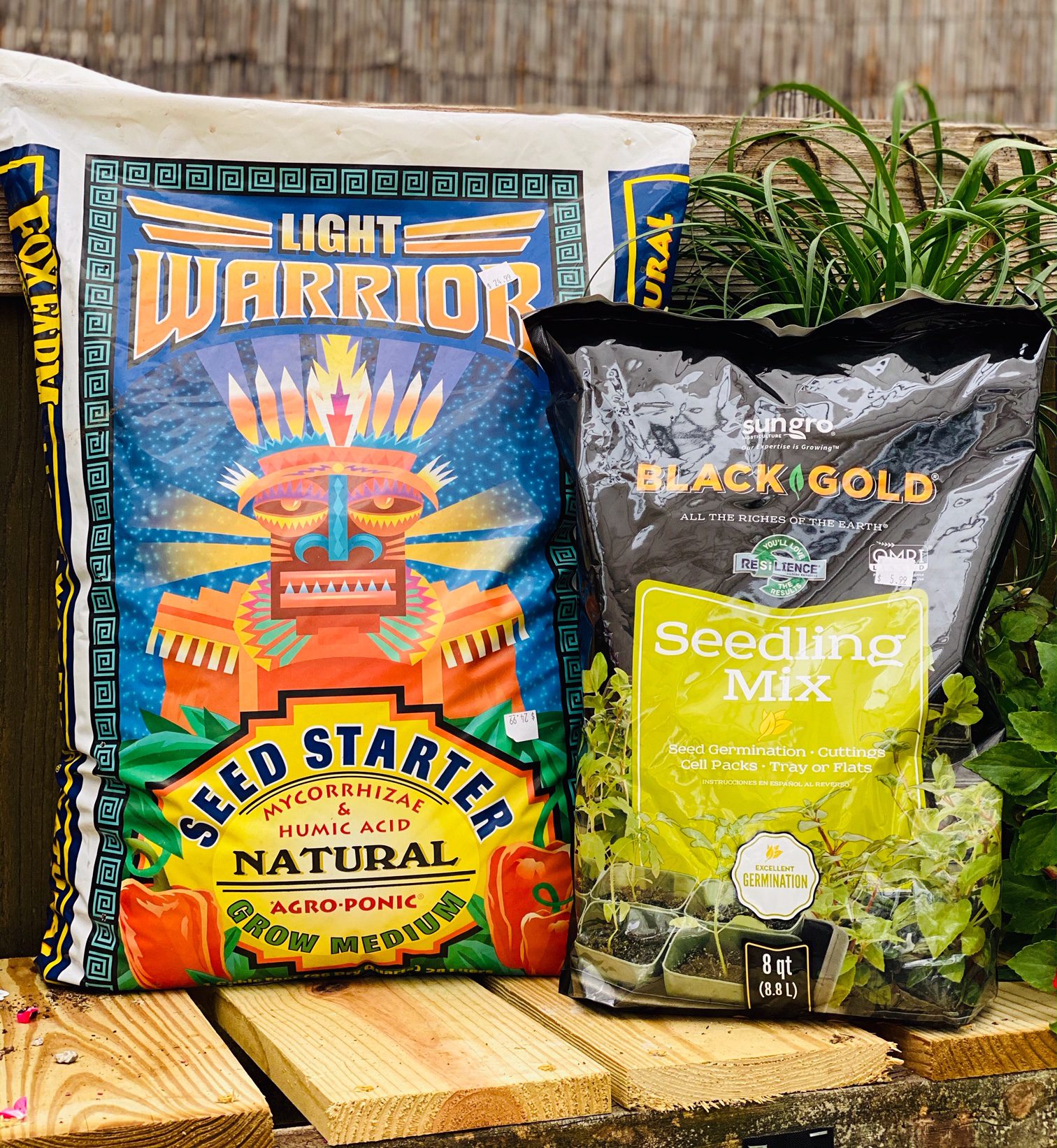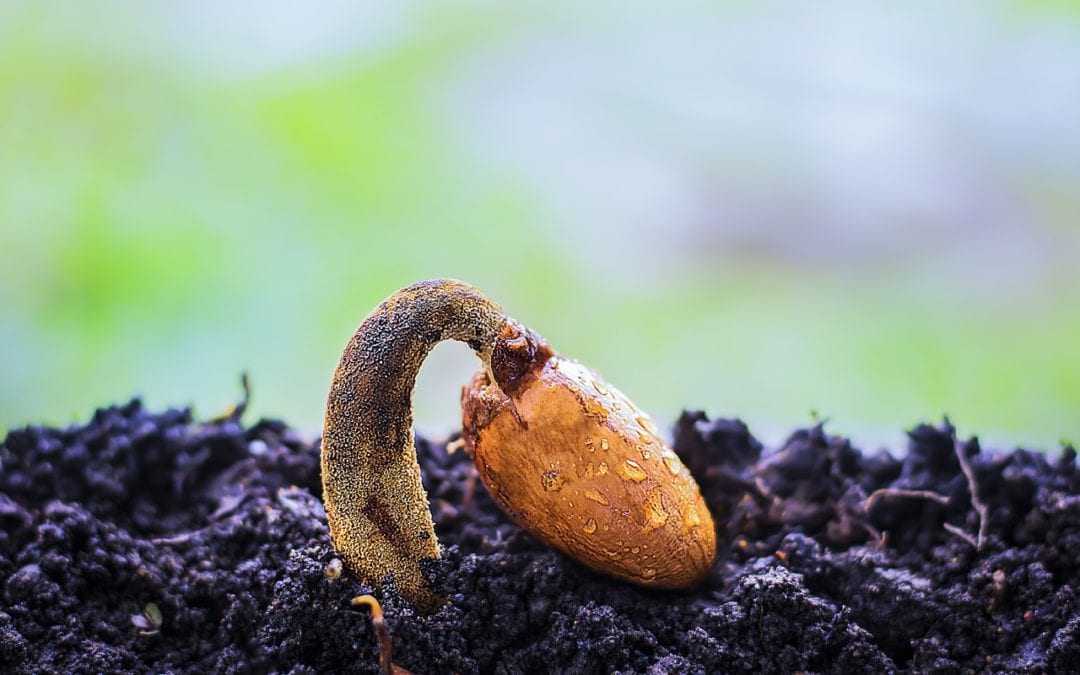Today’s blog is the first of 3 in our Starting Seeds series and is all about the supplies you need to start seeds germinating inside. By starting seeds indoors now, you create transplants that will be sturdy enough to plant in your garden once the danger of frost is gone. These transplants will develop into mature plants faster and are better able to withstand the rising temperatures through spring and summer. It’s recommended to start seeds indoors about 2-3 months before the last average frost date; that time is now.
Supplies Needed to Start Seeds Indoors
Grow lights/Sunny window: A warm, south-facing window is ideal because your seeds will receive enough light and warmth, but will not be burnt by a stream of direct sunlight. If you don’t have sufficient light and warmth from a window, you may need to invest in some professional grow lights that simulate the sun’s rays.
Containers: Plastic trays, peat pots, expandable peat bags, or recycled plastic pots from past nursery buys all suffice for starting seeds. Seeds can be sown in a variety of containers, but the container you choose shouldn’t be too big. Start small (2”) and bump up to larger containers as the seeds grow. Both of our locations carry a variety of containers to choose from.

Labels/Plant Markers: Buy some plastic plant markers to label your seed starts or eat lots of popsicles and use the sticks for DIY plant markers. As you plant your seeds stick the labels in. Don’t do it later or you’ll forget which seed you planted where. Adding the date is also beneficial so you can be aware of when your seed should have sprouted.
Potting soil: You can buy bags designed specifically for seedlings and cuttings or you can make your own mixture. Seeds need light, loose, fluffy soil to germinate. A good blend of quality soil, perlite or vermiculite, and peat moss with a 1/3 ratio of each is ideal. Espoma Organic Seed Starting Potting Mix, Fertilome Seed & Cutting mix, and Black and Gold Seedling mix are good choices. If you are starting large quantities of seeds, FoxFarm’s Light Warrior Grow Medium is the ultimate choice as it stimulates root growth and enhances nutrient uptake in plants.

Clear plastic: Clear plastic covering keeps the potting soil moist and the air warm and humid to help your seeds germinate, all while allowing sunlight to still reach your seeds. Provide space between the soil and the plastic. Store bought trays usually come with a plastic lid that gives ample space between the soil and the top of the lid. If you are using plastic wrap, give yourself some space by placing popsicle sticks or something into the edges of the container to “prop up” the plastic away from the soil.
Seeds: While many veggie seeds do great started inside, there are some vegetables that have a long taproot that do NOT do well being transplanted and they should be directly sown into the ground. These include: carrots, radishes, turnips, and the like. Tomato seeds are perfect to start indoors now because we start tomatoes early and give them the most time to grow before the heat of summer sets in, but they are cold sensitive so they need to be started inside to protect their tender growth. Don’t wait until spring to start seeds of tomatoes or you will be way too late! Come get the best selections on the seed racks now!

Warming Mats/Incandescent Christmas Lights: You don’t have to have warming mats for germination, but it sure helps to speed up the process. Warmth is essential to get those seeds sprouting. You can also zigzag the strands of incandescent Christmas lights (not the LED type) under your seed trays and plug them in each night.
So there you have it, the basics for seed starting. Be sure to check out Starting Seeds Part 2: Prepping, and Maintaining Through Germination, and Starting Seeds Part 3: Hardening Off Transplants and Garden Prep.
Happy sowing!
~The Happy Gardener, Lisa Mulroy


I was planning on coming in this weekend to get tomatoes seeds and supplies
Am I took late if I wait till end March to plant on the garden ?? I am a beginner
Hi Christy,
You are a little late for starting tomato seeds at the end of March. Tomato seeds should be started indoors mid January through February so that transplants will be ready to go in the garden in March. However, we have already been getting our tomato transplants in the nursery so you will probably have a pretty good selection to choose from transplants. They will still need to have cold protection until the treat of frost is gone. Check out a few of our Happy Gardener blogs linked here for info on growing tomatoes. And you should try to make one of our seminars this month all about growing tomatoes. See our event calendar on our site for dates. If you do try to grow seeds in the garden late, I suggest opting for cherry tomatoes as they are more likely to still set fruit once it gets hot.
https://www.rainbowgardens.biz/garden-tips/seeds-starting-supplies-garden-tips/
https://www.rainbowgardens.biz/garden-tips/growing-tomatoes-san-antonio-texas/
https://www.rainbowgardens.biz/garden-planning/san-antonio-tomatoes-heat-tolerant-sun-tomato/
can you tell me sizes and prices for used plastic pots- mainly the big ones such as for shrubs and trees- I need something for tomato plants.
thanks,
The largest size we have are only a handful of 5 gallon around the nurseries right now. They run about 60 cents. Larger pots go up from there ex: 10 gallon $2.50, but I don’t believe we currently have any on site.
Want to join email group
Hi Jeanine,
We’d be thrilled to have you join our newsletter! Just go to the link I am attaching and you can choose either our main newsletter or our weekly ad newsletter, or both! The main newsletter includes gardening tips, links to our instructional videos and more. Our weekly ad newsletter focuses on the weekend ad for both locations. Newsletter Sign Up.